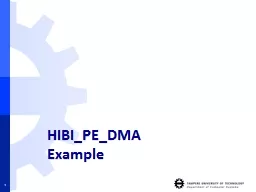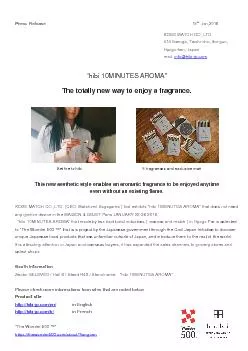PPT-HIBI_PE_DMA Example 1 HIBI bus operation
Author : araquant | Published Date : 2020-11-06
2 HIBI burst transfer streaming A burst transfer consist of bus command and destination address followed by data one or more data words Sending IP is responsible
Presentation Embed Code
Download Presentation
Download Presentation The PPT/PDF document "HIBI_PE_DMA Example 1 HIBI bus operation" is the property of its rightful owner. Permission is granted to download and print the materials on this website for personal, non-commercial use only, and to display it on your personal computer provided you do not modify the materials and that you retain all copyright notices contained in the materials. By downloading content from our website, you accept the terms of this agreement.
HIBI_PE_DMA Example 1 HIBI bus operation: Transcript
Download Rules Of Document
"HIBI_PE_DMA Example 1 HIBI bus operation"The content belongs to its owner. You may download and print it for personal use, without modification, and keep all copyright notices. By downloading, you agree to these terms.
Related Documents














